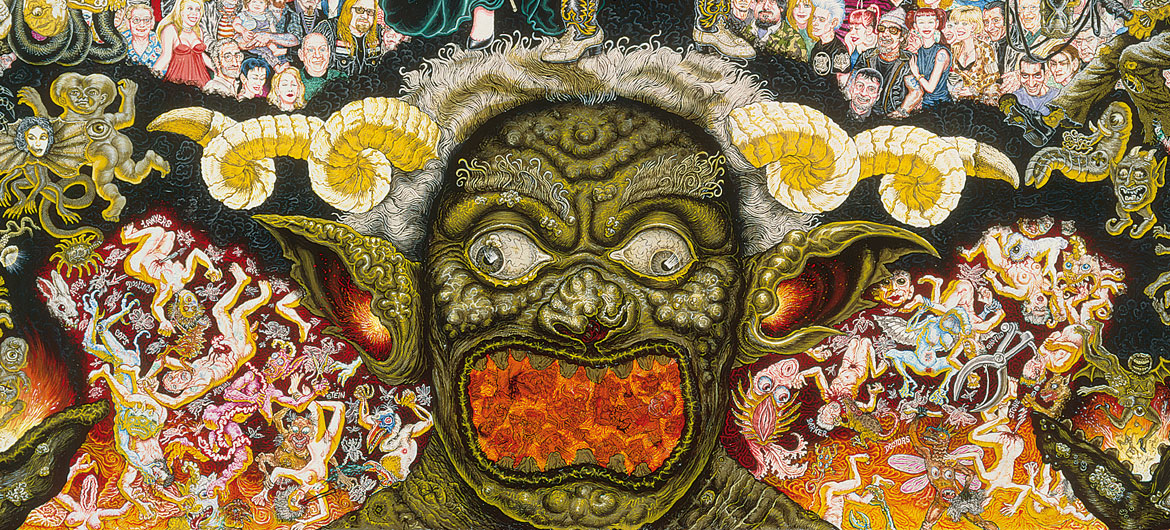Joe Coleman’s paintings of outlaws and depraved souls can bring to mind sordid circus sideshow banners, holy medieval manuscript illumination, narrative murals, 1960s underground comics, and the obsessive ravings of a madman.
His icons are feverishly dense with detail, pictures, words, loads of information. He renders his portraits in acrylic on wood panels with tiny paintbrushes, all those fine brushstrokes adding up to a visionary hyper-reality.
“Every time I start a new work, I’m digging for more and more information,” Coleman told The Quietus in 2016. “My digging is done with the finest brushes but also, it’s much like an archaeological dig inside of me because it’s bringing out things that are inside so that they appear on the surface.”
“Joe Coleman and the Shadow Self”—at Andrew Edlin Gallery in New York from Oct. 25 to Dec. 21, 2019—offers a 25-year survey of the Brooklyn painter’s art via 17 artworks.
![Joe Coleman's "The Holy Saint Adolf II [Adolf Wölfli]," 1995, acrylic on panel. (Courtesy Andrew Edlin Gallery, New York)](https://gregcookland.com/wonderland/wp-content/uploads/2019/12/The-Holy-Saint-Adolf-IIw-819x1024.jpg)
“I spared neither sex nor age. How many times I dyed my hands in human blood, I do not know,” Coleman quotes Albert Hicks in his painting of the murder and gangster, who was hung in New York in 1860 for piracy.
“A lot of the characters I paint, I feel were people who represent a true part of America that isn’t taught in history, but should be,” Coleman told The Quietus in 2016.
“The stories that I’m telling are the stories that are truly important,” Coleman told Susanne Pfeffer for a 2007 Berlin exhibition. “The stories about St. Sebastian and St. Peter that you see … are just quaint for a modern audience. They don’t have any real teeth, no real balls for a modern society. … I think serial killers are really saint-like. They are shamans that go into these dark places. They are like these rugged individuals of the old American mythology such as John Dillinger and Jesse James. But they are much farther into the abyss.”
“My intention,” Coleman told Stay Thirsty in 2016, “is just to find the humanity in the worst of humanity or just to find ‘what is humanity?’”
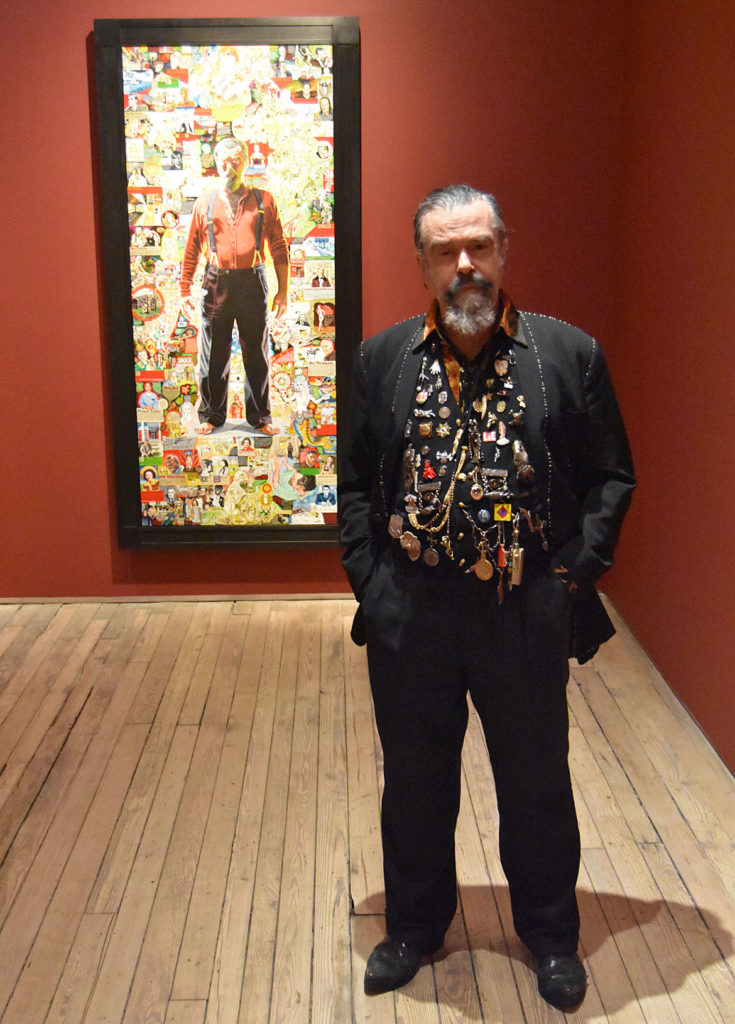
The exhibition also offers portraits of Coleman himself and the leggy blonde photographer Whitney Ward, his “wife and muse.”
Coleman was born in 1955 and grew up in Norwalk, Conn. He emerged in New York’s downtown arts scene of the 1970’s and 80’s as a performance artist (including “party explosions”) then painter.
When I bumped into Coleman in the gallery recently, he sported a goatee beard, suit and a waistcoat adorned with medals, skulls, claws, a depiction of a Feejee mermaid. He seemed like a magician crossed with P.T. Barnum crossed with a gone-to-seed Civil War colonel.
His Brooklyn home has been known as the home of his Odditorium, “a private museum where sideshow objects, wax figures, crime artifacts and works of religious devotion live together to form a dark mirror that reflects the alternative side of the American psyche,” according to his website.
”It gives you a way to possess your fears,” Coleman told The New York Times in 1999, ”in the same way that primitive tribes will make fetish objects. A hundred years from now, my collection might give an indication of our fears and obsessions and perversions and lusts and anger. It preserves these things that are inside all of us right now.”
Some sources:
• William Hamilton, “AT HOME WITH — Joe Coleman; Saints and Monsters,” The New York Times, Aug. 26, 1999.
• Sean Kitching, “A Devil With The Detail: Joe Coleman Interviewed,” The Quietus, May 29, 2016.
• Sarah Myers, “A Conversation with Painter, Performer and Collector Joe Coleman,” Stay Thirsty, October 2016.
• Susanne Pfeffer, “Interview with Joe Coleman,” for exhibition at KW Institute of Contemporary Art in Berlin, Germany, 2007.
If this is the kind of coverage of arts, cultures and activisms you appreciate, please support Wonderland by contributing to Wonderland on Patreon. And sign up for our free, weekly newsletter so that you don’t miss any of our reporting.
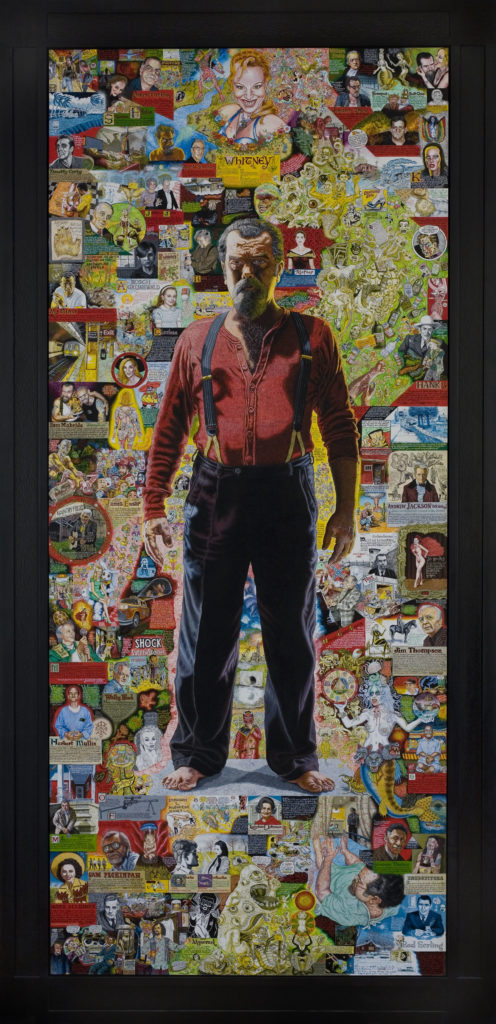
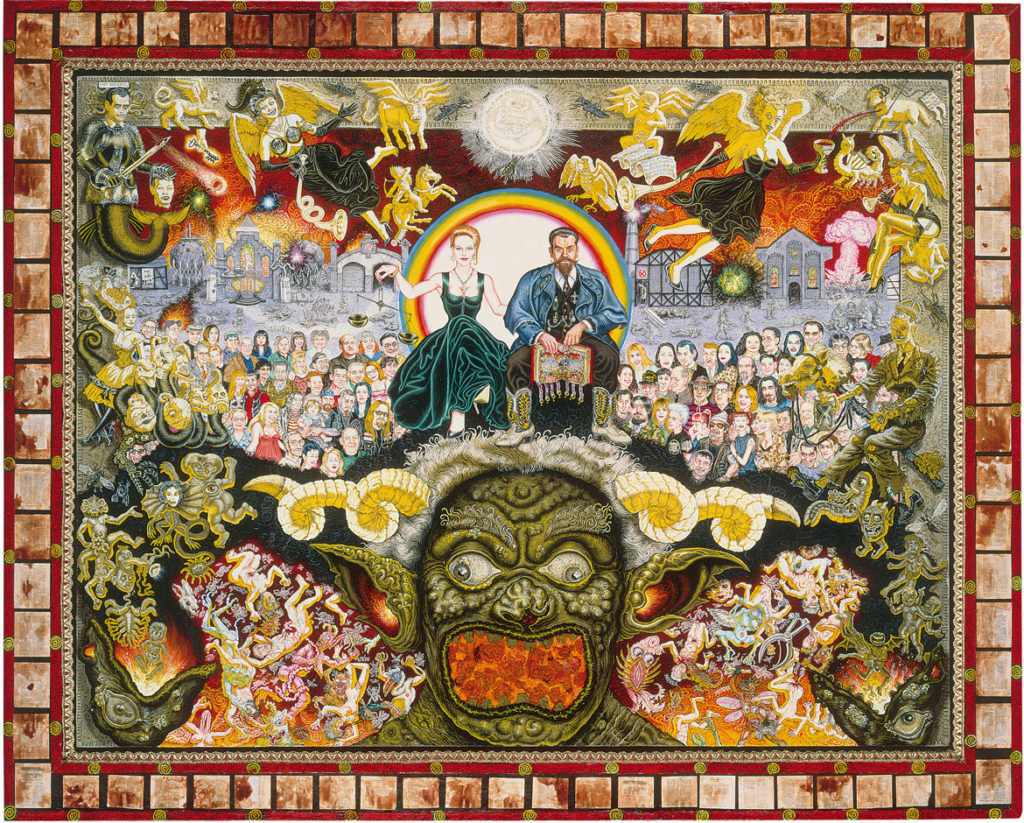
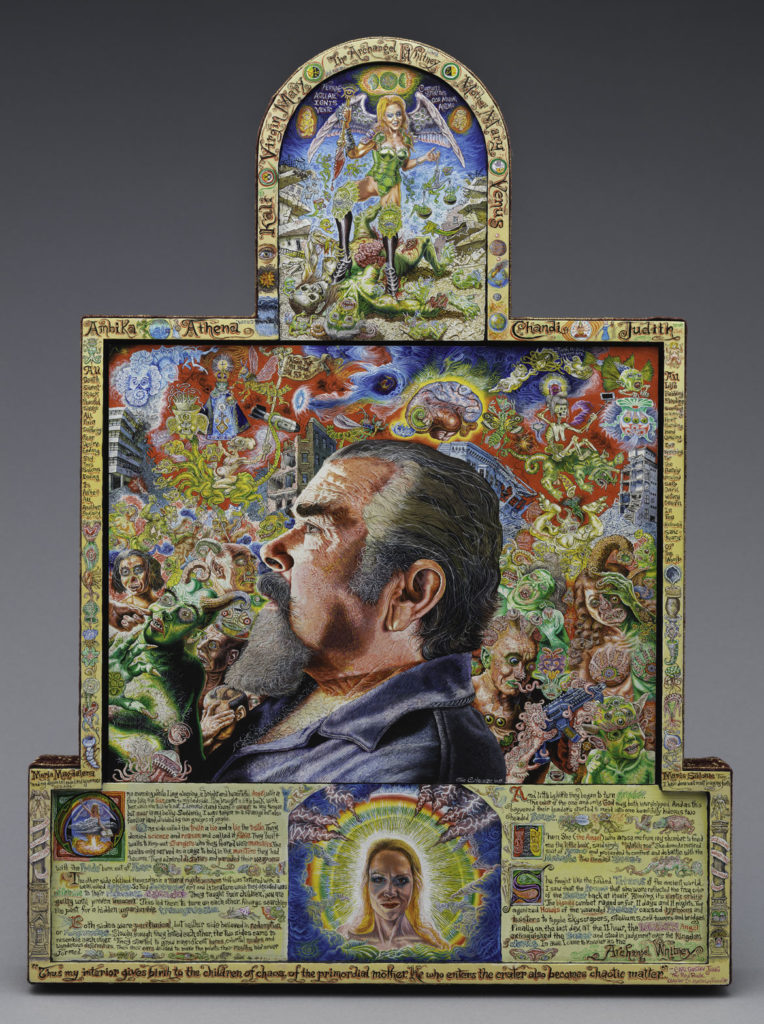
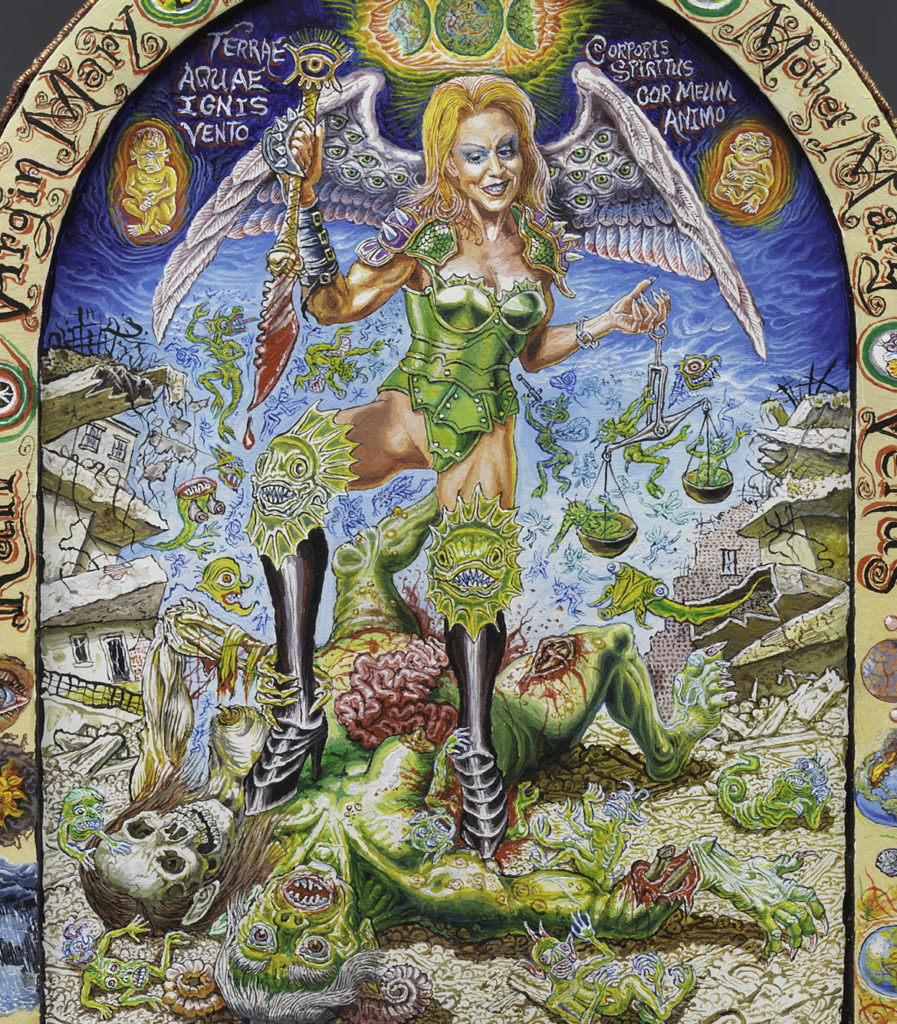
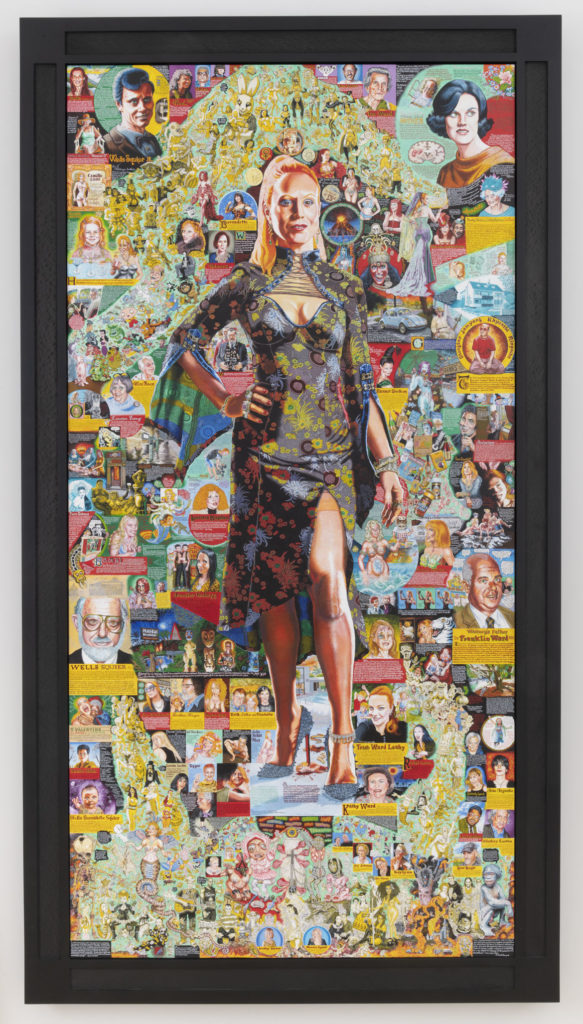
![Detail of Joe Coleman's "The Holy Saint Adolf II [Adolf Wölfli]," 1995, acrylic on panel. (Courtesy Andrew Edlin Gallery, New York)](https://gregcookland.com/wonderland/wp-content/uploads/2019/12/The-Holy-Saint-Adolf-IIDetail2-1024x558.jpg)
![Detail of Joe Coleman's "The Holy Saint Adolf II [Adolf Wölfli]," 1995, acrylic on panel. (Courtesy Andrew Edlin Gallery, New York)](https://gregcookland.com/wonderland/wp-content/uploads/2019/12/The-Holy-Saint-Adolf-IIwDetail-1024x562.jpg)
